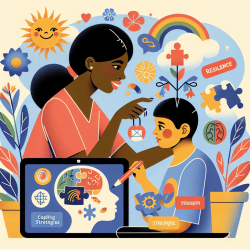Introduction
In the realm of pediatric healthcare, the integration of mind-body practices with conventional medical treatments is gaining traction. The research article, "The Elephant in the Room: The Need for Increased Integrative Therapies in Conventional Medical Settings," underscores the importance of such integrative approaches. This blog aims to explore how practitioners can leverage these findings to enhance their skills and improve patient outcomes.
The Case for Integrative Therapies
The research highlights that integrative therapies such as art, music, yoga, and acupuncture, when combined with standard medical treatments, can significantly enhance patient care. These therapies address not only the physical but also the mental, emotional, and spiritual aspects of health, offering a more comprehensive approach to treatment.
For instance, acupuncture has been shown to effectively reduce pain and anxiety in pediatric patients, as evidenced by its successful application in the Pediatric Emergency Department at NewYork-Presbyterian Morgan Stanley Children’s Hospital. Similarly, art therapy provides children a medium to express complex emotions that they might not be able to verbalize, thus aiding in psychological healing.
Implementing Integrative Practices
Practitioners looking to enhance their skills can start by incorporating integrative therapies into their practice. Here are some actionable steps:
- Education and Training: Attend workshops and seminars on integrative therapies to understand their applications and benefits.
- Interdisciplinary Collaboration: Work closely with therapists from different disciplines to create a holistic treatment plan for patients.
- Patient-Centered Approach: Engage with patients and their families to understand their preferences and tailor therapies accordingly.
- Research and Evaluation: Conduct and participate in research to evaluate the effectiveness of integrative therapies and contribute to the body of evidence supporting their use.
Overcoming Barriers
Despite the benefits, several barriers hinder the widespread adoption of integrative therapies. These include funding challenges, misclassification of therapies, and a lack of understanding among healthcare providers. To address these issues, practitioners can advocate for increased funding, proper classification, and education about the benefits of integrative practices.
Conclusion
Integrative therapies offer a promising avenue for enhancing pediatric care by promoting a holistic approach to treatment. Practitioners are encouraged to explore these therapies further and integrate them into their practice to improve patient outcomes. For a deeper understanding of the research and its implications, practitioners can read the original research paper, The Elephant in the Room: The Need for Increased Integrative Therapies in Conventional Medical Settings.










